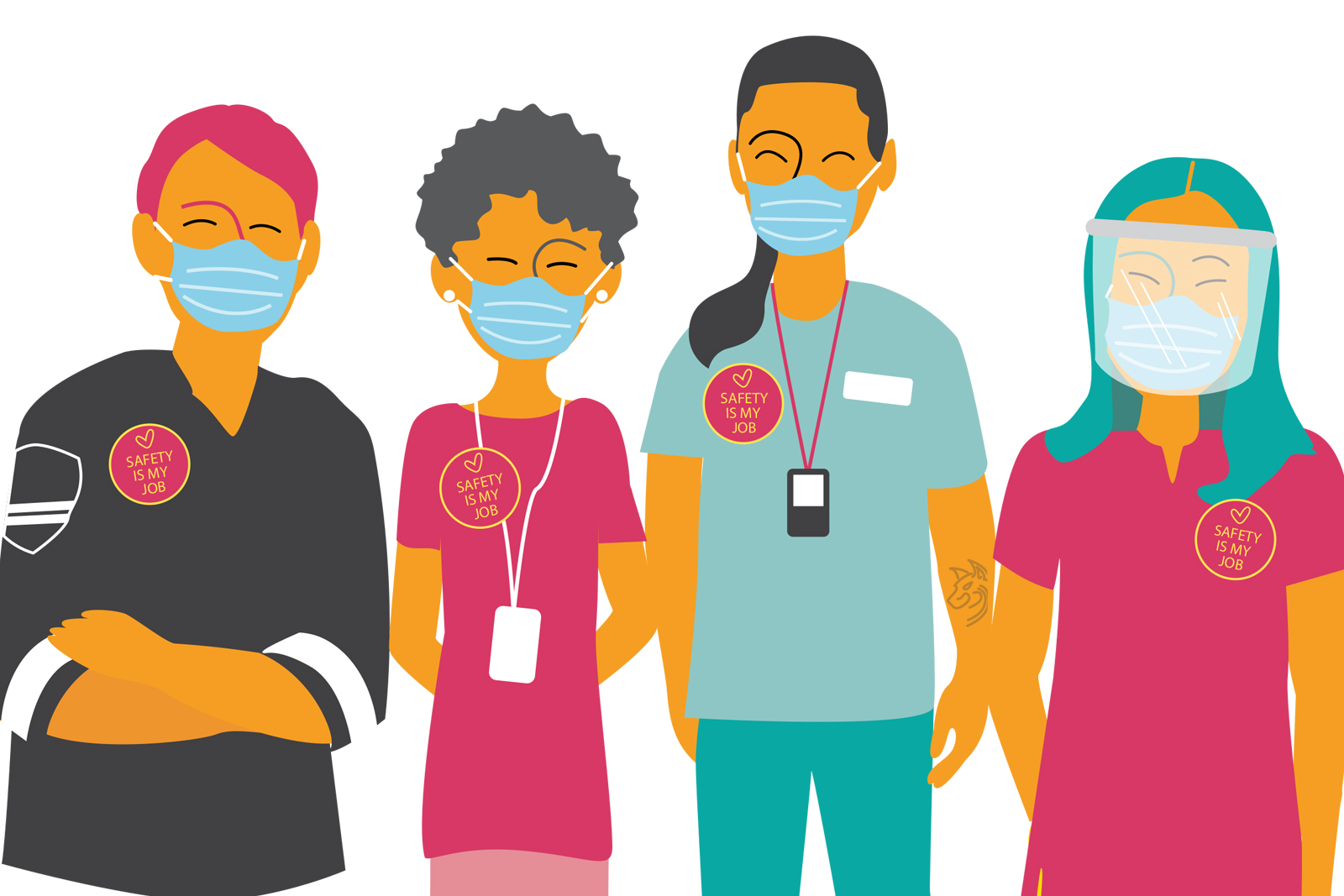Healthcare Excellence Canada
Safety conversations are part of a proactive approach to creating safety as well as responding to and managing harm after it occurs. They are a respectful discussion about safety between two or more people involved in organizing, delivering, seeking, and/or receiving healthcare, including healthcare providers, patients and essential care partners.
Why have safety conversations?
Safety conversations can help you gain more information about the care being discussed and/or provided. Having conversations with patients and essential care partners illuminates how they see, experience and contribute to creating safety. These conversations promote an understanding that staff and patient safety go hand-in-hand and recognize the value of creating safety together. Evidence confirms that organizations with a positive safety culture have less harm, and safety conversations help strengthen this culture.
How to have safety conversations
When we have safety conversations, it changes the way we think about safety. These conversations help us shift away from a focus on past harm to a more holistic view of safety. By moving from assurance and accountability reporting to a ‘practice of inquiry’ that places value on soft intelligence (listening, observing and perceiving), we empower a culture of collective responsibility for safety. The steps outlined here can help you plan and carry-out effective safety conversations.
Step 1
Make it safe to talk about safety: A big part of making safety conversations successful involves normalizing them. However, not everyone will feel safe to talk about safety. Equity is foundational to safety. Everyone needs to be aware of and acknowledge the inequities that people can experience in the healthcare system and how these experiences impact their ability to feel safe and share authentically.
Before safety conversations can take place, you will need to create an environment that allows everyone to say what they think. Here are a few suggestions:
• Use the ‘what makes you feel safe’ poster (or create your own) and post the results in your facility
• Get creative! Create your own ‘suggestion booth’ to provide anonymous opportunities to share
• Hold patient safety huddles with patients and essential care partners
• Learn more and hear directly from those who have found innovative solutions to normalizing safety conversations
Step 2
Ask: Safety conversations are built around the practice of asking questions. By asking questions, you’re taking the first step and ensuring that the onus is not on the patient or loved one to speak up. Questions you may ask include:
• Tell me about anything that alarmed or worried you in the past 24 hours?
• Tell me about harm you have experienced or witnessed in the past 24 hours?
• What has made you feel unsafe in the past 24 hours (or since we last talked)?
• What makes you feel safe?
• What would make you feel safer?
• What makes you feel unsafe?
• What are your care preferences (for instance, ‘what matters to you?’)?
• Would you like more explanation about any part of the care?
• Is there anything that we’re doing that may prevent you from achieving your best health outcomes?
Step 3
Listen: Observe, perceive, hear and recognize all types of harm, including psychological harm, dehumanization, delay in treatment, under treatment, over treatment, physical harm and their underlying contributing factors
• Listen to and learn from patients and loved ones; acknowledge them as experts in their care
• Use communication tools such as pamphlets, posters, and electronic bulletins to encourage patient-provider partnership and educate about safety-critical processes.
• Listen to and respect cultural differences, including beliefs, family norms and others
Step 4
Act: Based on the information and insights you have collected:
• Regularly engage with patients, essential care partners and other loved ones as core members of the care team and co-create solutions with them
• Support patients, essential care partners and other loved ones with information so they can anticipate what is coming, assess risks and benefits and make informed healthcare decisions
• Have a clear outline of steps that will be taken so everyone knows what to expect and when
• Loop back to patients and essential care partners to share how their concerns were addressed.
Step 5
Keep having safety conversations (don’t have just one): Communicate to patients and essential care partners about who to contact if they have concerns or questions.
For more information on safety conversations and patient safety, visit SafetyConversations.ca. To contact a member of Healthcare Excellence Canada’s safety team, please email safety-securite@hec-esc.ca
Source: Healthcare Excellence Canada













